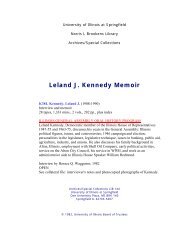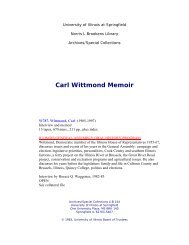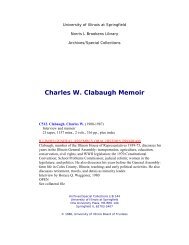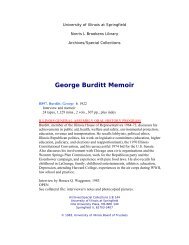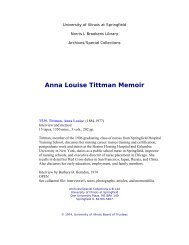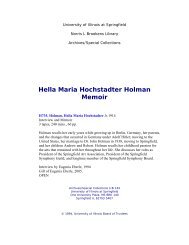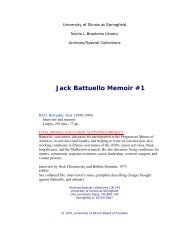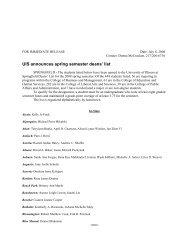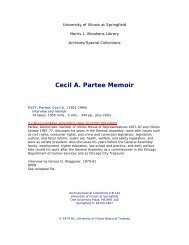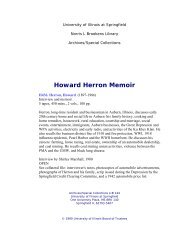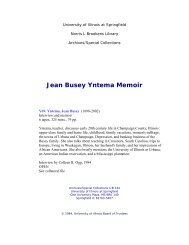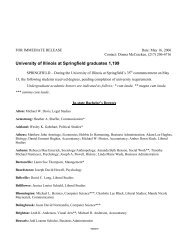STATEMENT OF FACTS - University of Illinois Springfield
STATEMENT OF FACTS - University of Illinois Springfield
STATEMENT OF FACTS - University of Illinois Springfield
You also want an ePaper? Increase the reach of your titles
YUMPU automatically turns print PDFs into web optimized ePapers that Google loves.
interrelated and that this interrelation caused a departure from the Hardy-<br />
Weinberg Equilibrium concerning independency. (Vol. LXXI, R. 13)<br />
When there is this type <strong>of</strong> departure from the equilibrium there is a higher<br />
likelihood that you will have matching alleles. (Vol. LXXI, R. 14) Basten believes<br />
that the interrelatedness <strong>of</strong> dogs needs to be taken into account and that a<br />
correction factor should be applied to the database. (Vol. LXXI, R. 15)<br />
In the present case, Basten applied his methodology to the results arrived<br />
at by Halverson to take into account the inbreeding aspect <strong>of</strong> the canine DNA<br />
database. (Vol. LXXI, R. 16-17) His results showed that the evidence is 167 times<br />
more likely that Senior’s dog Cagney is the source rather than another dog. (Vol.<br />
LXXI, R. 20-21) He then calculated the general frequency <strong>of</strong> the population and<br />
determined that the likelihood <strong>of</strong> a match was one in 1,680. (Vol. LXXI, R. 21)<br />
On cross-examination, Basten said that DNA testing is generally accepted<br />
in his scientific community for human and canine application. (Vol. LXXI, R. 34)<br />
When making his calculations he resorted to the work <strong>of</strong> Dr. Bruce Weir who has<br />
a distinguished career in population and statistical genetics. According to Weir’s<br />
work, a likelihood ration <strong>of</strong> 167 strongly supports the proposition that Cagney was<br />
the source <strong>of</strong> the hair. (Vol. LXXI, R. 35-37)<br />
Basten admitted that when he made his calculations he did not know that<br />
Senior’s dog, Cagney, was not a purebred dog. (Vol. LXXI, R. 39) It was explained<br />
that the 167 ration is still the best calculation available because there is no<br />
central <strong>Illinois</strong> canine database. (Vol. LXXI, R. 40) He stressed that knowledge<br />
<strong>of</strong> Cagney being a mix-breed would not have changed his statistics because he can<br />
only use this particular data set and theta. However, if he had a mixed-breed data<br />
base it could have changed the calculations significantly. (Vol. LXXI, R. 39-40)<br />
The database he used was from the west coast and there is no Midwest database.<br />
(Vol. LXXI, R. 43) He has no knowledge <strong>of</strong> the rate <strong>of</strong> inbreeding in <strong>Illinois</strong>;<br />
-69



